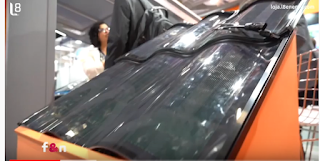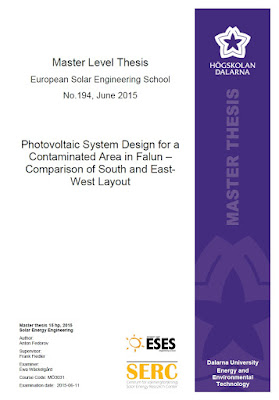https://static.wixstatic.com/ugd/b683ff_1138043cc69c4b17bef9116829beb3bf.pdf
terça-feira, 24 de setembro de 2019
Conheça a Telha Solar -A novidade que parou a Intersolar 2019-São Paulo-BRASIL
https://static.wixstatic.com/ugd/b683ff_1138043cc69c4b17bef9116829beb3bf.pdf
sexta-feira, 20 de setembro de 2019
Fórum Potência SÃO PAULO 24 de setembro de 2019 Horário: 8h00 às 18h00 CENTRO DE CONVENÇÕES REBOUÇAS Endereço: Av. Rebouças, 600 Pinheiros – São Paulo (SP)
Fórum Potência SÃO PAULO 24 de setembro de 2019
Horário: 8h00 às 18h00 CENTRO DE CONVENÇÕES REBOUÇAS
Endereço: Av. Rebouças, 600 Pinheiros – São Paulo (SP)
O Fórum Potência é idealizado e dirigido pelo Prof. Hilton Moreno e o Jornalista Marcos Orsolon
Prof. Hilton Moreno
Engenheiro Eletricista pela Escola Politécnica da Universidade de São Paulo; Diretor da Revista Potência; Membro do Comitê Brasileiro de Eletricidade da ABNT; Professor universitário; Palestrante em congressos, seminários e cursos no Brasil e no exterior; Autor e coautor de várias publicações; consultor de empresas.
Marcos Orsolon
Jornalista pela Universidade São Judas Tadeu; Diretor da Revista Potência; Ex-editor da Revista Anamaco; Ex-editor do Jornal República da Mooca; Ex-editor do Jornal Folha da Capital
Programa do evento
08h00 – 08h30: Credenciamento
08h30 – 09h00: Abertura com participação do Eng. Vinicius Marchese Marinelli, presidente do CREA-SP
09h00 – 09h30: Conceitos de proteção elétrica e geração fotovoltaica para instalações de baixa tensão | Tiago Dalzochio, especialista da SOPRANO
09h30 – 10h00: Soluções fotovoltaico | Loris Andreoli e Renan Juliatti, especialistas CHINT
10h00 – 10h30: Soluções em atendimento e mix de produtos Etil | Julio Cesar Theodoro Junior, especialista da ETIL
10h30 – 11h15: Intervalo
11h15 – 11h45: Soluções descentralizadas na indústria de máquinas | Rogério Cantelli, especialista da WEIDMÜELLER CONEXEL
11h45 – 12h15: Indústria 4.0 na Distribuição de Energia | Pedro Okuhara, especialista da MITSUBISHI ELECTRIC
12h15 – 12h45: MÚTUA e os benefícios para os profissionais do CREA | Aldo Leopoldo Rosseto Filho, especialista da MÚTUA-SP
12h45 – 14h00: Intervalo
14h00 – 14h30: Plataforma BIM / Biblioteca para o Revit | Fábio Itiro Sato, consultor da DUTOTEC 14h30 – 15h00: Manutenção e substituição de Semicondutores de Potência em Inversores e Soft Starters | Rivaldo Caram e Sr. Clóvis Gajo, especialistas da SEMIKRON
15h00 – 15h30: Solução em segurança e instalação elétrica industrial – seus conceitos, mitos e realidade | Marcos Leandro Oliveira, especialista da TRAMONTINA ELETRIK
15h30 – 16h15: Intervalo
16h15 – 16h45: A evolução do uso da imagem térmica | Vitor Unterkicher, especialista da FLIR 16h45 – 17h15: especialista da STECK
17h15 – 17h45: Regras de ouro para instalação de cabos elétricos em instalações fotovoltaicas | Hilton Moreno, consultor da COBRECOM
17h45 – 18h15: Vícios e problemas encontrados nas instalações elétricas fotovoltaicas no Brasil | Hilton Moreno, professor, diretor da REVISTA POTÊNCIA, consultor do PROCOBRE 18h15: Sorteio de brindes – encerramento
LINK PARA INSCRIÇÃO GRATUITA
https://revistapotencia.com.br/forum-potencia-sao-paulo-2019/
O Fórum Potência é idealizado e dirigido pelo Prof. Hilton Moreno e o Jornalista Marcos Orsolon
Prof. Hilton Moreno
Engenheiro Eletricista pela Escola Politécnica da Universidade de São Paulo; Diretor da Revista Potência; Membro do Comitê Brasileiro de Eletricidade da ABNT; Professor universitário; Palestrante em congressos, seminários e cursos no Brasil e no exterior; Autor e coautor de várias publicações; consultor de empresas.
Marcos Orsolon
Jornalista pela Universidade São Judas Tadeu; Diretor da Revista Potência; Ex-editor da Revista Anamaco; Ex-editor do Jornal República da Mooca; Ex-editor do Jornal Folha da Capital
Programa do evento
08h00 – 08h30: Credenciamento
08h30 – 09h00: Abertura com participação do Eng. Vinicius Marchese Marinelli, presidente do CREA-SP
09h00 – 09h30: Conceitos de proteção elétrica e geração fotovoltaica para instalações de baixa tensão | Tiago Dalzochio, especialista da SOPRANO
09h30 – 10h00: Soluções fotovoltaico | Loris Andreoli e Renan Juliatti, especialistas CHINT
10h00 – 10h30: Soluções em atendimento e mix de produtos Etil | Julio Cesar Theodoro Junior, especialista da ETIL
10h30 – 11h15: Intervalo
11h15 – 11h45: Soluções descentralizadas na indústria de máquinas | Rogério Cantelli, especialista da WEIDMÜELLER CONEXEL
11h45 – 12h15: Indústria 4.0 na Distribuição de Energia | Pedro Okuhara, especialista da MITSUBISHI ELECTRIC
12h15 – 12h45: MÚTUA e os benefícios para os profissionais do CREA | Aldo Leopoldo Rosseto Filho, especialista da MÚTUA-SP
12h45 – 14h00: Intervalo
14h00 – 14h30: Plataforma BIM / Biblioteca para o Revit | Fábio Itiro Sato, consultor da DUTOTEC 14h30 – 15h00: Manutenção e substituição de Semicondutores de Potência em Inversores e Soft Starters | Rivaldo Caram e Sr. Clóvis Gajo, especialistas da SEMIKRON
15h00 – 15h30: Solução em segurança e instalação elétrica industrial – seus conceitos, mitos e realidade | Marcos Leandro Oliveira, especialista da TRAMONTINA ELETRIK
15h30 – 16h15: Intervalo
16h15 – 16h45: A evolução do uso da imagem térmica | Vitor Unterkicher, especialista da FLIR 16h45 – 17h15: especialista da STECK
17h15 – 17h45: Regras de ouro para instalação de cabos elétricos em instalações fotovoltaicas | Hilton Moreno, consultor da COBRECOM
17h45 – 18h15: Vícios e problemas encontrados nas instalações elétricas fotovoltaicas no Brasil | Hilton Moreno, professor, diretor da REVISTA POTÊNCIA, consultor do PROCOBRE 18h15: Sorteio de brindes – encerramento
LINK PARA INSCRIÇÃO GRATUITA
https://revistapotencia.com.br/forum-potencia-sao-paulo-2019/
quarta-feira, 18 de setembro de 2019
Advanced Grid-Tied Photovoltaic Micro-Inverter Yuheng Lu-Electrical and Computer Engineering at the University of Canterbury, Christchurch, New Zealand. 2015
Advanced Grid-Tied Photovoltaic Micro-Inverter -Yuheng Lu
A thesis submitted in partial fulfilment of the requirements for the degree of Master of Engineering in Electrical and Computer Engineering at the University of Canterbury, Christchurch, New Zealand. 2015
ABSTRACT
Along with the damaged environment and the emerging energy crisis, many problems have been caused by utilizing fossil fuels. Green energy, also known as renewable energy, has been trusted as a good alternative for the conventional energy resources and e ort has been contributed in the development of modern green energy. Solar energy is one of the renewable energy resources. Owing to its advantages of being nearly unlimited, pollution free, noise free and relatively easy to maintain, photovoltaic (PV) systems have experienced a signi cant increase in the past few decades. In this thesis, a grid-tied solar micro inverter has been presented and several key technology issues on this PV system are investigated: 1. Maximum power point tracking (MPPT) strategies. Under changing atmospheric conditions, intensity of the sunlight irradiation and shading problems, the output of a solar panel varies nonlinearly. MPPT techniques are designed to enable PV panels always operate at the optimal power point and produce maximum power. In this paper, di erent MPPT strategies are compared and analysed. An improved variable step-size P&O MPPT strategy is also proposed to compensate those drawbacks from conventional MPPT techniques. Simulation results are also given. 2. Control strategies of a single-phase grid-tied inverter. A deadbeat controller, named the OSAP control, is proposed for the inverter. This inverter is analysed into two states: standalone inverter and grid-tied inverter. In each state, the OSAP controller is applied to control the inverter. Some disadvantages are also shown for the OSAP controllers. An improved OSAP controller is then introduced to compensate these drawbacks. Simulation results are given to support the theory. 3. Experiment of this solar inverter. An interleaved boost converter is shown to implement the MPPT techniques. Experiments of the stand-alone inverter and grid-tied inverter are also conducted with the OSAP control strategies. The experiment of this PV system under some environmental changes are also conducted and the transient response is given. Chapter 1 deals with the background introduction and literature review. A model of solar cell is introduced in Chapter 2 and the simulation model is also built to analysis the characteristics of solar panel output power. Several Maximum Power Point Tracking (MPPT) techniques are evaluated and an improved variable step-size MPPT technique is proposed to overcome the iv ABSTRACT disadvantages. In Chapter 3, a control strategy is developed for a grid-tied PV micro-inverter, which is called one-sampling-ahead-preview (OSAP) control. Firstly a full-bridge inverter is analysed. Two states of this inverter are introduced, one is the stand-alone inverter and the other is the grid-tied inverter. Mathematical and simulation model have been built for each inverter. Then an OSAP voltage controller is proposed for the stand-alone inverter and an OSAP current controller is proposed the grid-tied inverter. However, since OSAP controllers belong to the deadbeat control category, these exists a deadbeat response in the output. And another problem is that OSAP controllers highly depend on the inverters have accurate parameters for the components, which is not practical in real life. So an improved OSAP controller is introduced to solve these problems, which is the OSAP with a resonant controller. Simulation results are also given to support the theory. In Chapter 4, the experiment of this system has been shown and experimental results have been provided. Chapter 5 explains the conclusions and some developments need to be done in the future work.
LINK:https://pdfs.semanticscholar.org/8747/aa104a8bbf6dca1d09b391588ae7017df94e.pdf
segunda-feira, 16 de setembro de 2019
Photovoltaic System Design for a Contaminated Area in Falun – Comparison of South and EastWest Layout Master thesis 2015 Solar Energy Engineering Author: Anton Fedorov
Photovoltaic System Design for a Contaminated Area in Falun – Comparison of South and EastWest Layout Master thesis 2015 Solar Energy Engineering
Author: Anton Fedorov
Abstract
In this thesis the solar part of a large grid-connected photovoltaic system design has been done. The main purpose was to size and optimize the system and to present figures helping to evaluate the prospective project rationality, which can potentially be constructed on a contaminated area in Falun. The methodology consisted in PV market study and component selection, site analysis and defining suitable area for solar installation; and system configuration optimization based on PVsyst simulations and Levelized Cost of Energy calculations. The procedure was mainly divided on two parts, preliminary and detailed sizing. In the first part the objective was complex, which included the investigation of the most profitable component combination and system optimization due to tilt and row distance. It was done by simulating systems with different components and orientations, which were sized for the same 100kW inverter in order to make a fair comparison. For each simulated result a simplified LCOE calculation procedure was applied. The main results of this part show that with the price of 0.43 €/Wp thin-film modules were the most cost effective solution for the case with a great advantage over crystalline type in terms of financial attractiveness. From the results of the preliminary study it was possible to select the optimal system configuration, which was used in the detailed sizing as a starting point. In this part the PVsyst simulations were run, which included full scale system design considering near shadings created by factory buildings. Additionally, more complex procedure of LCOE calculation has been used here considered insurances, maintenance, time value of money and possible cost reduction due to the system size. Two system options were proposed in final results; both cover the same area of 66000 m2. The first one represents an ordinary South faced design with 1.1 MW nominal power, which was optimized for the highest performance. According to PVsyst simulations, this system should produce 1108 MWh/year with the initial investment of 835,000 € and 0.056 €/kWh LCOE. The second option has an alternative East-West orientation, which allows to cover 80% of occupied ground and consequently have 6.6 MW PV nominal power. The system produces 5388 MWh/year costs about 4500,000 € and delivers electricity with the same price of 0.056 €/kWh. Even though the EW solution has 20% lower specific energy production, it benefits mainly from lower relative costs for inverters, mounting and annual maintenance expenses. After analyzing the performance results, among the two alternatives none of the systems showed a clear superiority so there was no optimal system proposed. Both, South and East-West solutions have own advantages and disadvantages in terms of energy production profile, configuration, installation and maintenance. Furthermore, the uncertainty due to cost figures assumptions restricted the results veracity.
LINK:http://www.diva-portal.se/smash/get/diva2:853199/FULLTEXT01.pdf
Assinar:
Postagens (Atom)
















































 JOSIL ARTISTA PLASTICO FORTALEZA CEARA BRASIL AV.HERACLITO GRAÇA 41 TEL(85)32542378
JOSIL ARTISTA PLASTICO FORTALEZA CEARA BRASIL AV.HERACLITO GRAÇA 41 TEL(85)32542378
















